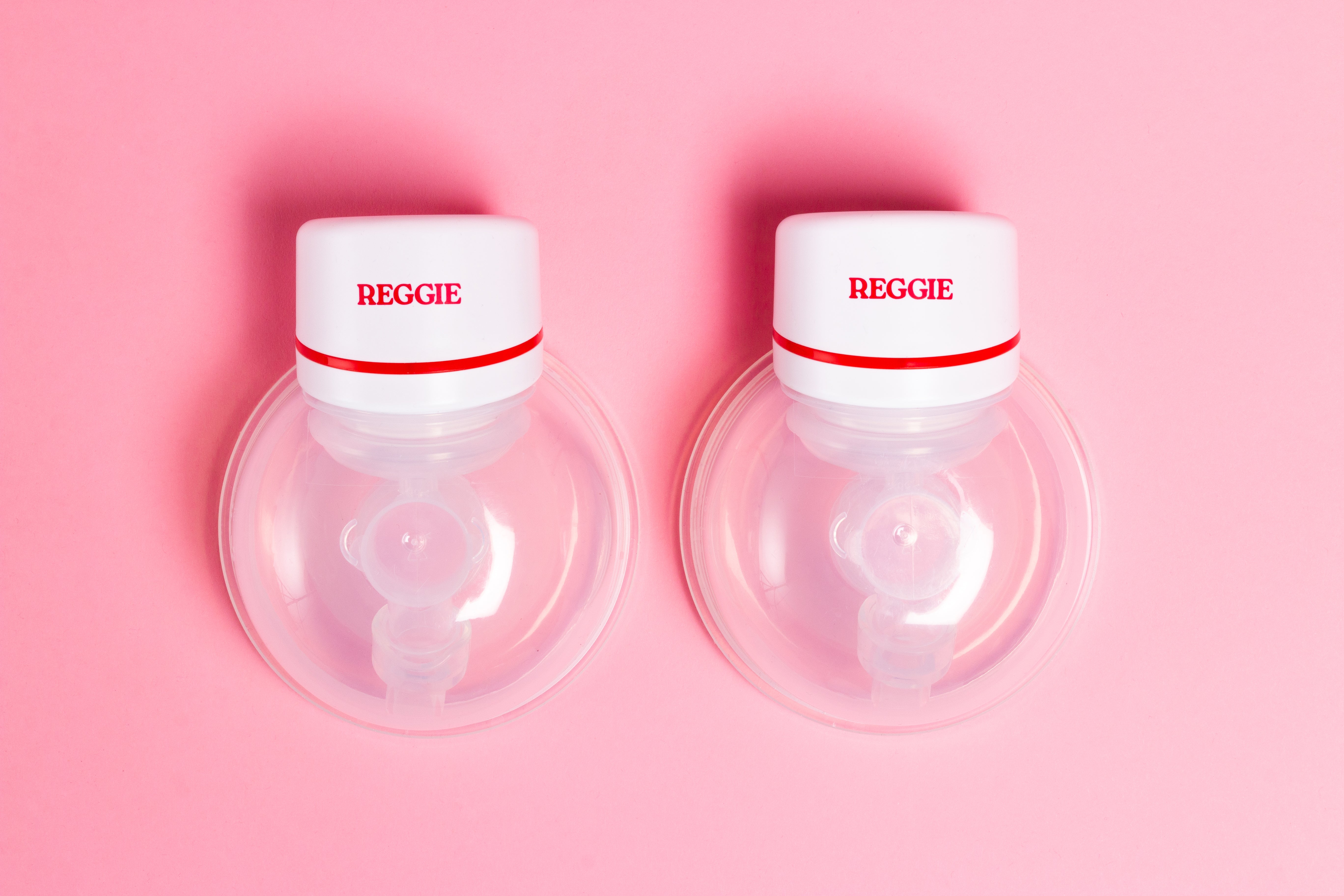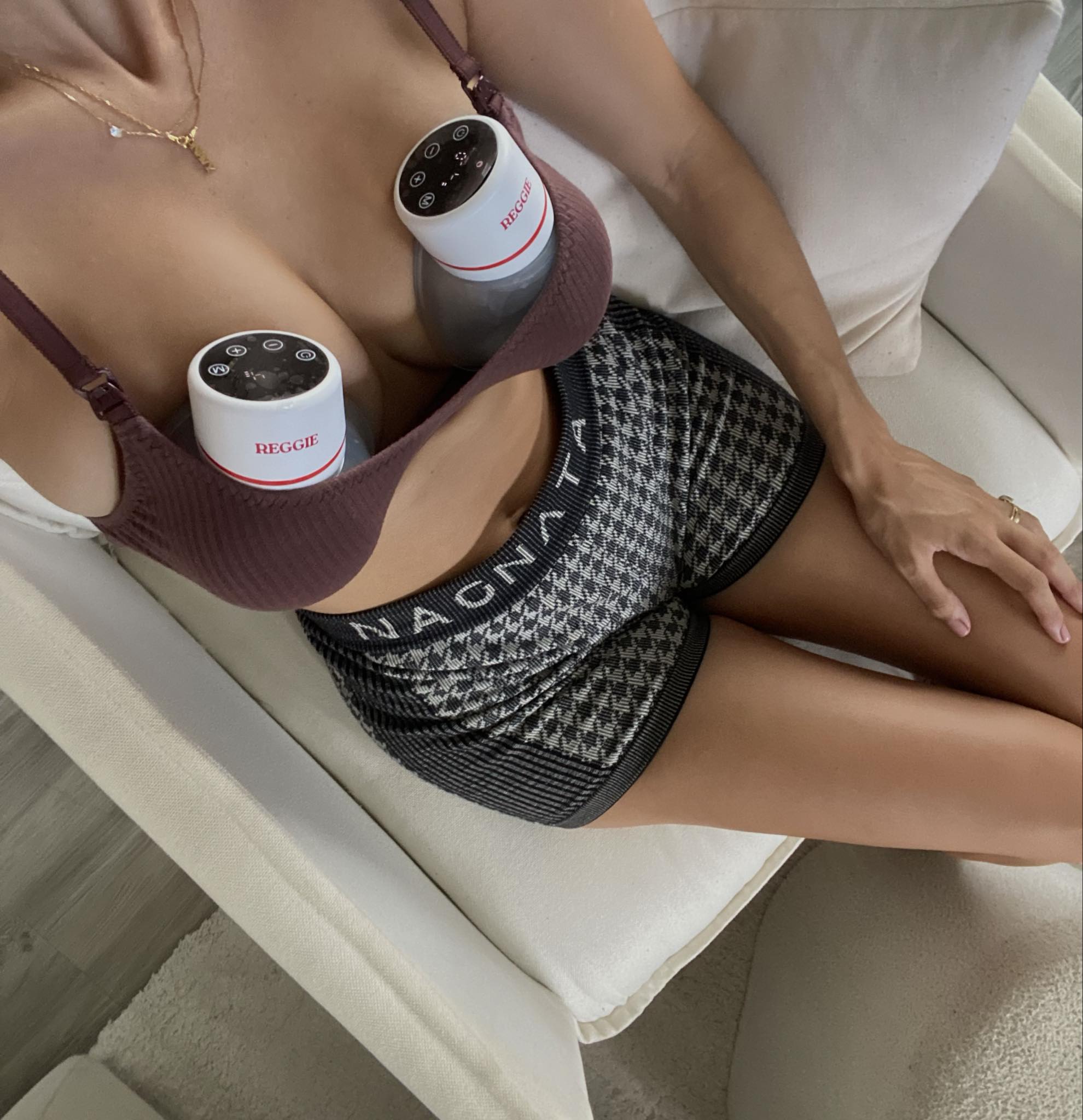Essential Breast Pumping Schedule for New Mums
Breast pumping schedules are crucial for maintaining milk supply and ensuring your baby gets the nutrition they need. Whether you're a working mum, have premature twins, or are exclusively pumping, a structured routine can make all the difference. Here's what you need to know:
- Newborns (0-3 months): Pump 8-12 times daily, including at least one night session. Aim for 15-20 minutes per session.
- Milk Supply Basics: Pumping regularly boosts prolactin levels, especially at night, and helps prevent engorgement.
- Wearable Pumps: Perfect for busy mums, they allow multitasking and discreet pumping at work or in public.
- Adjusting Over Time: As your baby grows, reduce sessions gradually to match their feeding needs.
Quick Tip:
Use techniques like warm compresses and breast massage to improve milk flow. Wearable pumps like the Elvie Stride or Lansinoh can help streamline your routine.
Stay consistent, choose the right pump, and adapt your schedule as your baby grows. Read on for detailed schedules and tips for pumping success.
How Milk Production Works
Understanding how your body produces milk is key to setting up an effective pumping routine. Your breasts operate on a biological system that adjusts milk supply based on how frequently milk is removed - whether through nursing or pumping. This is why having a structured pumping schedule, especially with modern wearable pumps, can make a big difference.
The Role of Supply and Demand
Milk production follows a simple rule: the more milk you remove, the more your body produces. This process is driven by two hormones: prolactin, which stimulates milk production, and oxytocin, which triggers the let-down reflex to release milk.
Interestingly, prolactin levels are highest at night - up to 35% higher between 1 am and 6 am compared to daytime levels . This makes night-time pumping particularly effective for maintaining your supply.
Your milk production also fluctuates throughout the day. On average, a breast can hold about 60-90 mL of milk at a time .
To encourage a strong let-down reflex during pumping, try these tips:
| Technique | Benefit |
|---|---|
| Looking at baby photos | Boosts oxytocin levels |
| Using warm compresses | Enhances milk flow |
| Gentle breast massage | Helps stimulate let-down |
| Relaxation exercises | Speeds up pumping sessions |
Choosing the Right Breast Pump
The type of breast pump you use can make a big difference in your pumping experience. Each type has its own strengths:
| Type | Best For | Output |
|---|---|---|
| Manual | Occasional use, backup | - |
| Electric | Regular pumping | Produces 30-50% more milk than manual pumps |
| Hospital-grade | Establishing supply | - |
| Wearable | Busy, mobile mums | - |
To maximise milk removal, ensure your pump's flange fits correctly and adjust suction settings as needed. Sessions lasting 15-20 minutes are ideal, as they allow you to fully express both the early, watery milk and the fattier milk that comes later. This ensures your baby gets balanced nutrition. In the next section, we’ll dive into how wearable pumps can make scheduling even easier.
Pumping Schedule for 0-3 Months
Based on the hormonal patterns mentioned earlier, these schedules are designed to work with wearable pumps and cater to a newborn's feeding needs.
Pumping-Only Schedule
For those exclusively pumping, aim for 8 sessions a day to replicate a newborn's feeding routine:
| Time | Session Length | Notes |
|---|---|---|
| 6:00 AM | 20 mins | High milk production time |
| 9:00 AM | 15-20 mins | Mid-morning session |
| 12:00 PM | 15-20 mins | Lunchtime pump |
| 3:00 PM | 15-20 mins | Afternoon session |
| 6:00 PM | 15-20 mins | Evening pump |
| 9:00 PM | 15-20 mins | Before bed |
| 12:00 AM | 15-20 mins | Midnight session |
| 3:00 AM | 15-20 mins | Early morning pump |
Stick to 3-hour intervals as much as possible. Each session should last 15-20 minutes per breast or 30 minutes if pumping both at the same time .
Mixed Nursing and Pumping Plan
If you're combining breastfeeding with pumping, a flexible approach works best. Pump after one or two daytime feedings when your supply tends to be higher. Here's a practical example:
Start with a 6:00 AM breastfeeding session, followed by a 15-minute pump. Continue breastfeeding on demand every 2-3 hours, adding pumping sessions after a midday feed and again in the evening.
Night Pumping Guide
Wearable pumps make overnight pumping easier and less disruptive. Plan for one or two sessions at night, typically around midnight and 3:00 AM, for about 15-20 minutes each.
To streamline night pumping:
- Use the massage mode on your pump to help with let-down.
- Keep lights dim, preferably using red light, to avoid disturbing your sleep cycle.
- Store pump parts in the fridge between uses for faster clean-up.
For an extra boost, try power pumping during your last evening session. Alternate between 10 minutes of pumping and 10 minutes of rest for a full hour to help increase supply .
Changing Schedules for Older Babies
As your baby moves past the newborn phase, wearable pumps become even more helpful in managing changing routines. This stage calls for thoughtful adjustments to ensure your milk supply stays steady while meeting your growing baby's needs.
When to Pump Less Often
You can start cutting back on pumping sessions when these signs appear:
| Indicator | Details |
|---|---|
| Weight Gain | Steady and consistent growth trends |
| Milk Supply | Fully established by around 12 weeks |
| Sleep Pattern | Baby sleeps longer stretches at night |
| Feeding Efficiency | Feeds effectively in 5-10 minutes per breast |
| Breast Fullness | Less engorgement between sessions |
To reduce pumping safely, drop one session every 5-7 days. Most mums find they can maintain their supply with 5-7 sessions daily. A common adjusted schedule might involve pumping every 3-4 hours during the day, with one session at night.
"Combining hand expression with electric pumping can increase milk output by up to 48% compared to pumping alone"
Try adding 2 minutes of hand expression before pumping to help boost your output .
Getting More Milk in Less Time
If you're aiming to get more milk during shorter sessions, here are some tips:
- Use a warm compress and gentle breast massage before pumping to encourage let-down.
- Take advantage of your wearable pump's massage mode and apply breast compression during sessions.
- Devices like the Elvie Stride Plus, with hospital-grade suction and a discreet design, make it easier to maintain milk production even with fewer sessions .
Next, we’ll look at how to fit wearable pumps into your daily routine with smarter scheduling.
sbb-itb-08733ff
Using Wearable Pumps Day-to-Day
As babies grow and daily routines shift, wearable pumps can be a game-changer for keeping up milk supply while staying on top of your schedule.
Multitasking While Pumping
Wearable pumps let you express milk without pausing your day. These compact devices slip into your regular bra, so you don’t need specialised clothing. Their hands-free design means you can handle everyday tasks while pumping.
| Activity Type | Suitable Tasks | Safety Tips |
|---|---|---|
| Sedentary Tasks | Desk work, light chores, childcare | Keep pump controls within easy reach |
| Light Exercise | Walking, gentle stretching | Avoid sudden or vigorous movements |
This convenience is especially helpful as you adjust to the changing needs of older babies.
Pumping at Work or in Public
Wearable pumps are designed to make expressing milk outside the home easier and more discreet. Features that help when you're at work or in public include:
- USB-C charging, so you can quickly recharge on the go
- Quiet operation, keeping disruptions to a minimum
For workplace pumping, opt for loose-fitting tops and have extra collection cups on hand. Many mums manage to pump during meetings or while working at their desks thanks to these inconspicuous devices.
Smart Pump Features
Today’s wearable pumps come with tech that simplifies your routine and saves time.
| Feature | Benefit | Usage Tip |
|---|---|---|
| Adjustable Suction | Customise comfort and output | Start with a low setting, then adjust |
| Battery Life | Lasts 3–5 sessions per charge | Recharge between tasks |
Some pumps also include bra adapters, and replacement parts are easy to find, making them a reliable option for long-term use.
Wearable Pump Comparison
When planning your pumping schedule, picking equipment that fits your routine is key. Here's a quick look at the specs:
Pump Features and Specs
| Feature | Lansinoh | Willow Go | Elvie Stride |
|---|---|---|---|
| Suction Strength | 280 mmHg | 280 mmHg | Hospital-grade |
| Milk Capacity | 8 oz | 5 oz | 5 oz |
| Battery Life | 8 sessions | 5 sessions | 3 hours |
| Included Flanges | 4 sizes | 2 sizes | 2 sizes |
| Price | $199 USD | $349 USD | - |
The Lansinoh pump shines with its larger 8 oz milk capacity and a battery that lasts through 8 pumping sessions, making it a great choice for all-day use.
The Elvie Stride offers app-based tracking and detailed session monitoring, which can be helpful for managing your pumping routine.
Key factors to keep in mind:
- Expressing throughout the day
- Pumping at work
- Managing multiple sessions daily
Choosing the right pump can make it easier to stick to your schedule and stay consistent.
Conclusion: Keys to Successful Pumping
Throughout this guide, we've covered how combining consistency with a flexible approach can help you maintain milk production while fitting pumping into your daily life.
Here are the main takeaways:
- Wearable pumps have transformed the pumping process, boosting milk output by up to 11% compared to older models .
- Ensuring the right flange fit and using breast compression during 15-20 minute sessions can help you get the most out of each session .
- A well-planned routine that balances regular breast emptying with adaptable equipment can make pumping more manageable and effective.






Leave a comment